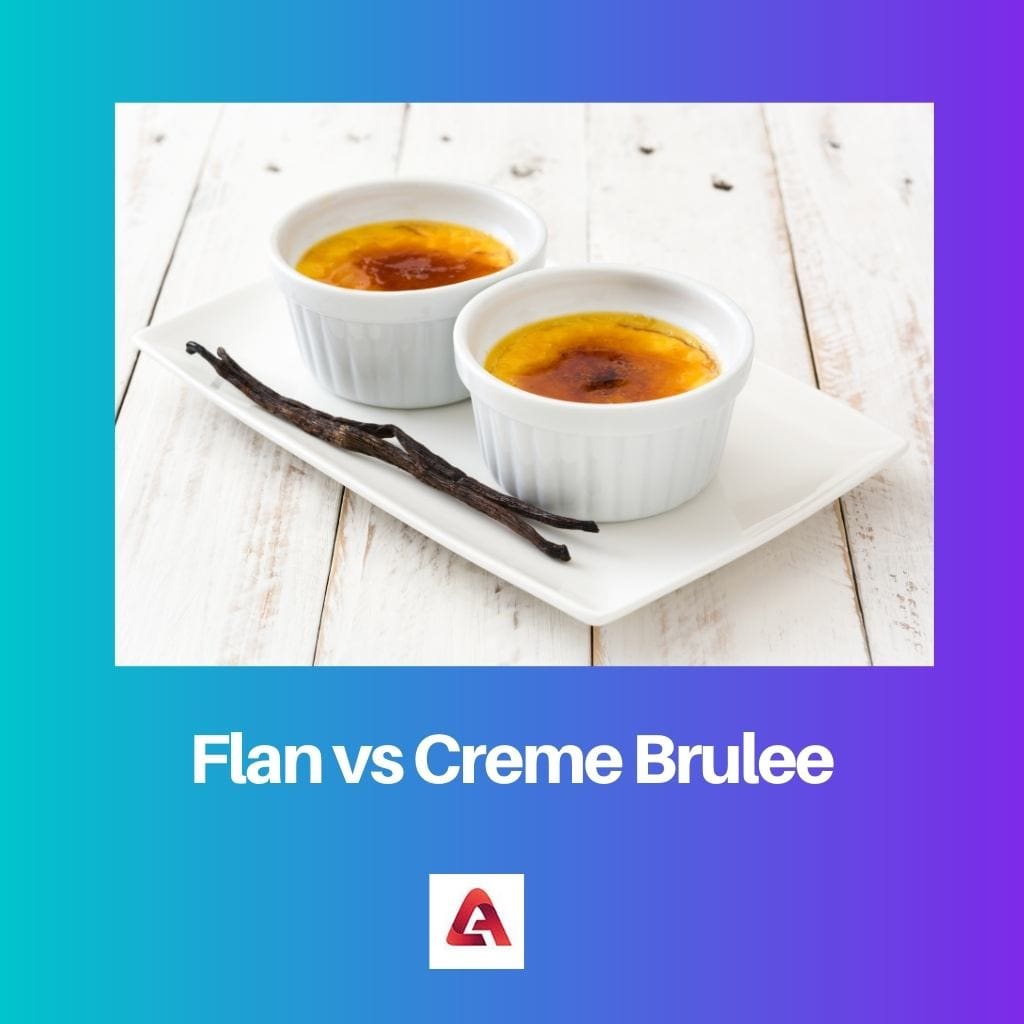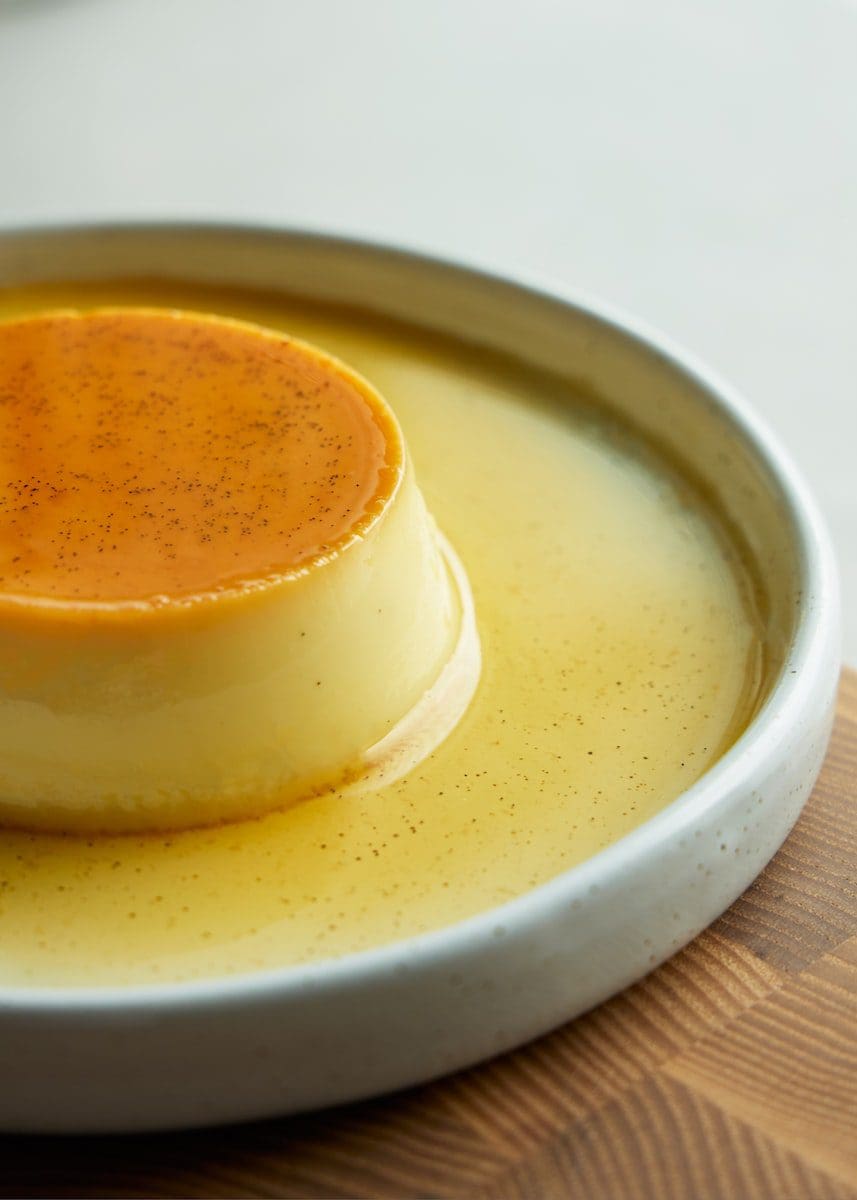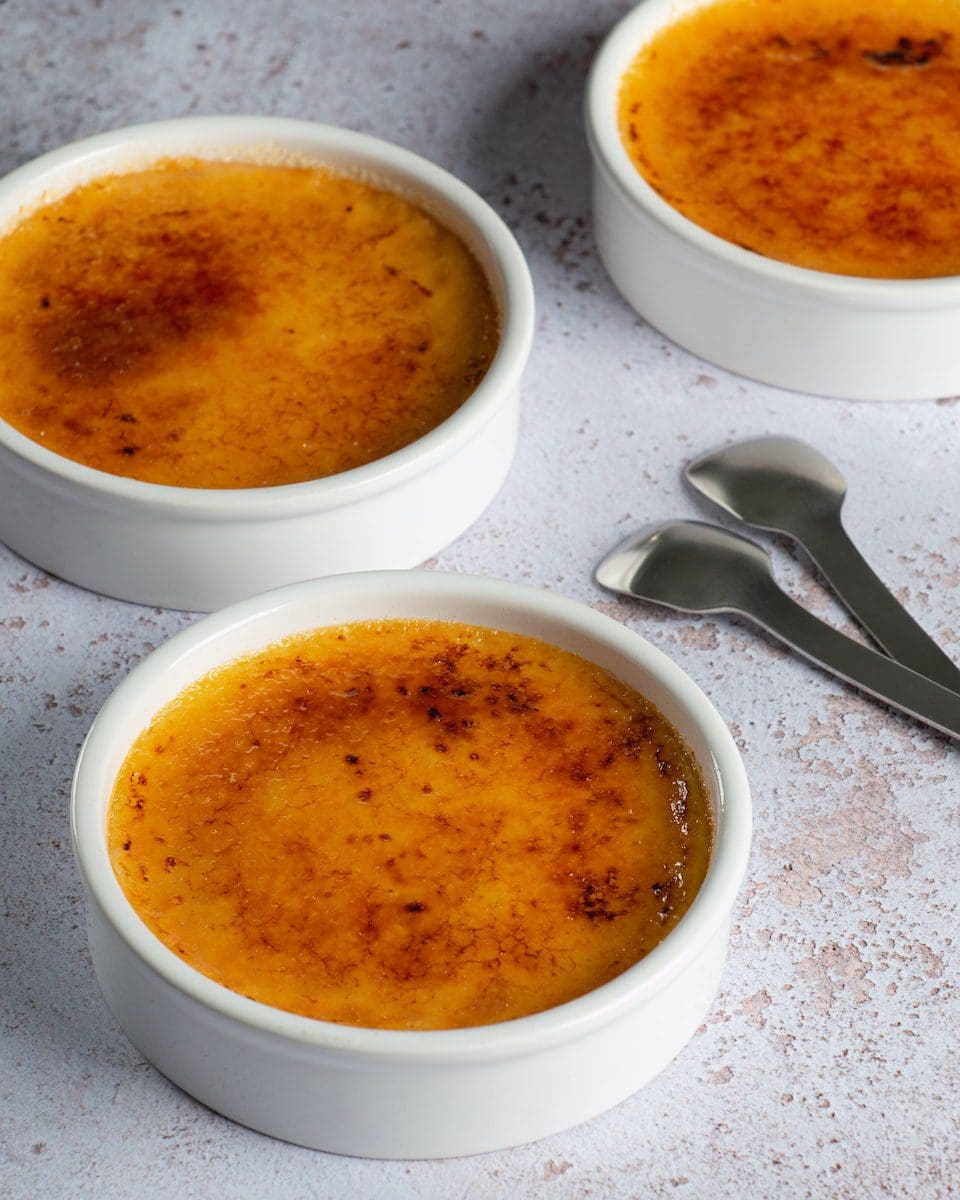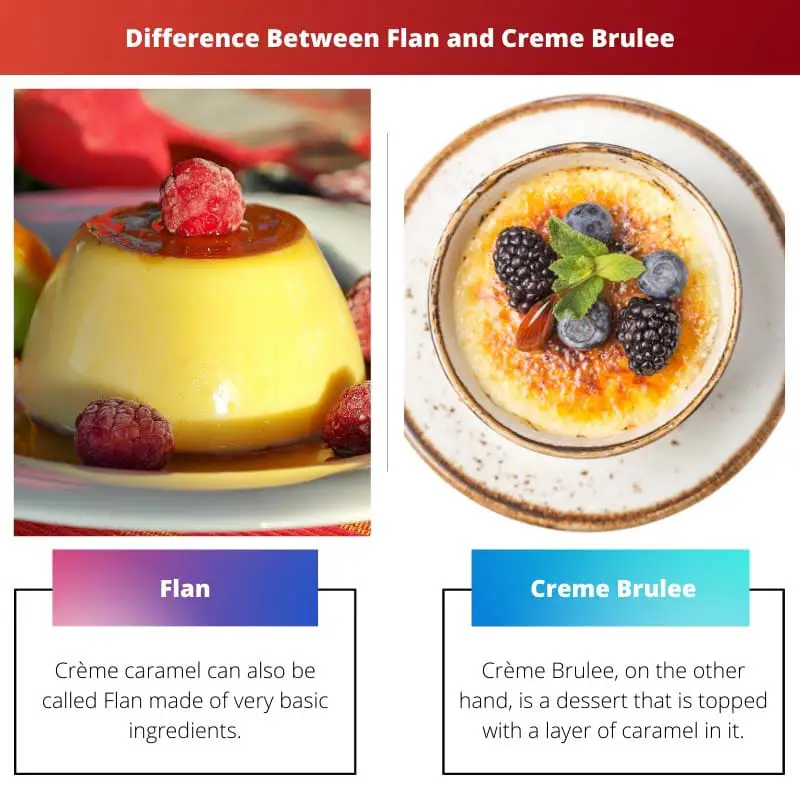Food is important for the survival of all living beings. Food comes in many forms, and people develop new recipes daily.
However, in today’s world, most people love desserts more than the main course. It might seem quite funny, but some people do have this habit.
Desserts are something that is not compulsorily sweet always as there are some desserts like the Indian ‘pan’ where it can be consumed with sweets and also without sweets.
Similarly, Flan and Creme Brulee are the two most famous desserts in the world.
Most people might get confused between these two desserts, but you will be surprised to know that these two are two different recipes/desserts.
There is a huge difference in their ingredients, texture, and cooking method or technique.
Key Takeaways
- Flan is a custard dessert baked with a caramel topping and served with whipped cream or fruit.
- Crème Brûlée is also a custard dessert baked with a caramelized sugar topping that is torched to form a hard shell.
- While both desserts share similar ingredients and preparation methods, the main difference lies in the texture and presentation, with flan being soft and smooth and crème brûlée being firm and crunchy on top.
Flan vs Creme Brulee
Flan is a custard dessert made with a layer of clear caramel sauce. It is also called a crème caramel, caramel pudding, caramel custard and condensed milk pudding. Crème Brulee, or burnt cream or Trinity cream, is a rich custard base with caramelized sugar.

Comparison Table
| Parameters of Comparison | Flan | Creme Brulee |
|---|---|---|
| Served in | Flan is served as a standalone. | Crème Brulee, on the other hand, is served in dishes. |
| Toppings | Got a different type of toppings. It has got caramelised sugar or milky-caramel syrup can be used. | Crème Brulee, on the other hand, uses torched sugar and gives a sense of burnt custard. |
| Caramel layer | The caramel layer is soft | Crème Brulee, on the other hand, has a delicate hard caramel layer. |
| Ingredients | Ingredients used in flan are cream/milk, egg yolks, sugar and vanilla. | Cream, egg yolks, vanilla extracts, and sugar. |
| Origin | Flan originated from Roman cuisine. | Crème brulee originated from France. |
| Served cold/warm | Flan is served cold | It can be served cold or warm. |
| Defined | Flan is a dish | Crème Brulee is a dessert topped with a layer of caramel. |
What is Flan?
Crème caramel can also be called Flan, made of very basic ingredients. The flan ingredients include cream/milk, egg yolks, sugar, and vanilla. The Flan originated from Roman cuisine and is considered to be a dish.
The flan-making process must be done carefully, as chefs need to get that perfect texture.
The ratio of each ingredient must be kept at a perfect level, as a little bit of off-balance in the ingredient can damage the ultimate texture.
Suppose you put too much sugar can also damage the texture, and the same goes for the other ingredients. This is the reason why it takes a longer period to prepare flan.
A flan is baked, and at last, the end product is soaked in a milky caramel soup/syrup.
The Romans originated the Flan as they considered the dish healthy, and today, the flan recipe is widely famous in parts of Latin America and the United States.
For preparing a flan, a chef must have patience as the process takes a lot of time.
If you want to know how a flan tastes, visit the nearest Starbucks, as they have been serving it for the last few years.

What is Creme Brulee?
Crème Brulee, on the other hand, is a dessert topped with a layer of caramel. The Creme Brulee is thickened with some cream, yolks of eggs, and vanilla extracts.
However, these are also the ingredients of this dessert, and they may differ.
The Creme Brulee originated in France.
The smoothness is created when the result arrives before you on the table. People have enjoyed this dessert because of its rich and sweet custard that gives perfect enjoyment.
The ingredients of Creme Brulee are quite simple, but when it comes to the uses of the cream, then most chefs will prefer a combination of heavy and light cream.
This recipe, too, takes quite some time to prepare.
Chefs must have the patience level to make this dessert the most delicious. The average time to prepare this dessert would take 3-4 hours. And this is why mastering this recipe is not everyone’s cup of tea.
Creme Brulee also has been tapped by Starbucks, and if you are craving it at this hour, then I am sure that the nearest Starbucks is open so you can try it out.

Main Differences Between Flan and Creme Brulee
- Creme Brulee is made with egg yolk, cream/milk, vanilla extracts, and sugar, while Flan, on the other hand, is also made with cream or milk, sugar, egg yolk, and vanilla.
- The ingredients might be the same for both, but the ratio of proportions varies.
- There is a difference in the texture as Flan’s texture can depend on the origin, but the texture of Creme Brulee has a delicate layer of caramel.
- Flan is served as a standalone, whereas Creme Brulee is served in dishes.
- Flan is served cold, whereas Creme Brulee can be served cold or warm.
- The Flan originated from Roman cuisine, whereas Creme Brulee originated from France.




